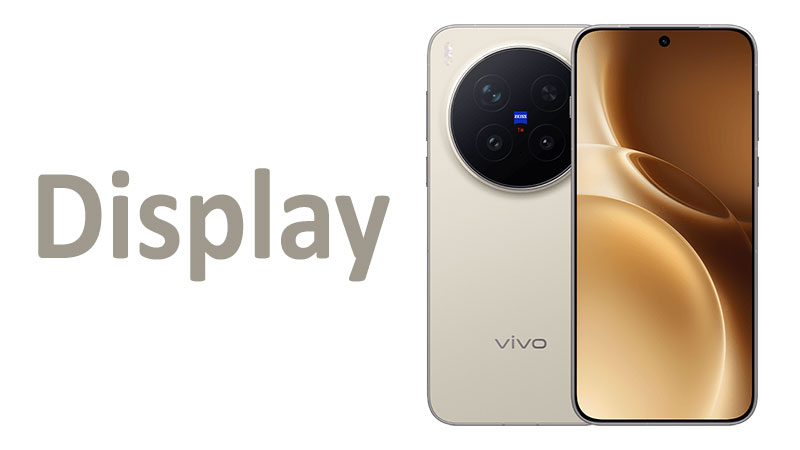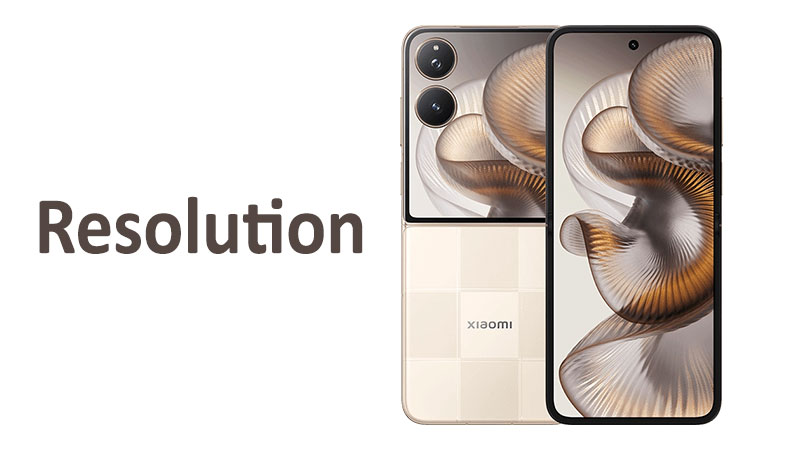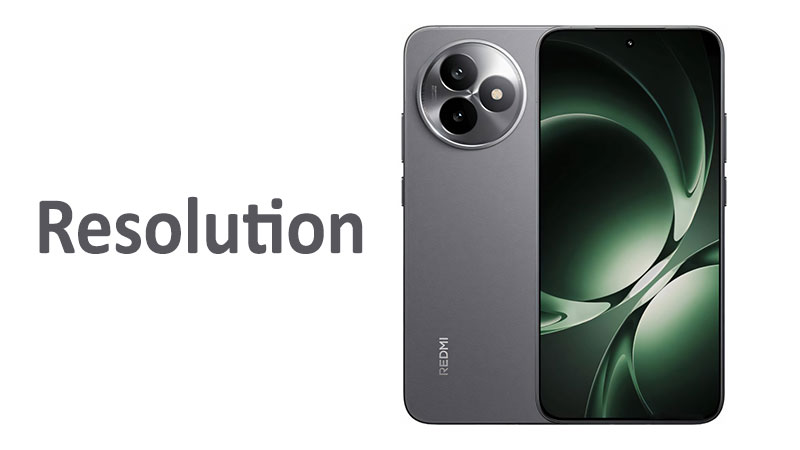The vivo X300 Pro Display features are central to the phone’s premium experience. This crucial component includes advanced LTPO AMOLED technology. It boasts a dynamic 120Hz refresh rate. Furthermore, it achieves an astonishing 4500 nits peak brightness. A detailed review of these specifications is essential. The display is the primary way users interact with a smartphone. Its quality dictates the gaming experience. It also influences media consumption and daily usability. Understanding these high-end specifications is vital for consumers. This article offers a complete and comprehensive buyer’s guide. We analyze how the vivo X300 Pro screen stacks up against its competitors.
The Core Technology: LTPO AMOLED Panel
The vivo X300 Pro utilizes a sophisticated LTPO AMOLED panel. This choice represents the pinnacle of modern display technology. LTPO stands for Low-Temperature Polycrystalline Oxide. This material is used in the display’s backplane. This advanced technology allows for variable refresh rates. It delivers exceptional performance and superior power efficiency. This makes the high-end screen sustainable.
Understanding LTPO Functionality
LTPO technology enables the screen to dynamically adjust its refresh rate. The phone can drop the rate as low as 1Hz. It does this when static content is displayed. For instance, reading a text message uses minimal power. The rate instantly ramps up to 120Hz during scrolling or gaming. This capability is crucial for maximizing battery life. It ensures the phone conserves energy intelligently. This seamless transition is often unnoticeable to the human eye. Therefore, the user always enjoys optimal performance.
Specialized Comparison: LTPO vs Standard AMOLED
Standard AMOLED displays often use LTPS backplanes. LTPS stands for Low-Temperature Polycrystalline Silicon. LTPS displays typically offer fixed refresh rates like 60Hz or 120Hz. They cannot efficiently scale down below a certain threshold. Consequently, a standard 120Hz AMOLED consumes more power. It consumes more power even when showing a static image. The vivo X300 Pro’s LTPO technology solves this power drain problem. It makes the high refresh rate usable all day long. This is a significant advantage over non-LTPO competitors. It represents a true power efficiency upgrade.
Pros and Cons of LTPO
A major advantage is the vastly improved battery life. LTPO technology manages power draw dynamically and effectively. Another pro is the fluid user experience it enables. It provides 120Hz smoothness precisely when it is needed most. A potential con is the increased manufacturing cost. This specialized component can raise the final price of the device. However, the efficiency gains usually outweigh this additional cost. It is an investment in longevity and performance.
Color Depth and Fidelity
The vivo X300 Pro display supports 1 Billion colors. This incredible color depth is synonymous with professional-grade screens. It allows for smoother color gradients. It also ensures richer, more accurate color reproduction. The ability to render 10-bit color is essential for quality HDR content. This provides a more lifelike viewing experience overall. This makes the vivo X300 Pro a fantastic device for photo editing. It is also perfect for high-fidelity movie watching.
Important Points for Buyers on Color
Buyers should know this ensures extremely accurate content display. Colors appear exactly as the content creator intended them to look. The display is compatible with various professional color standards. The vivo X300 Pro excels in color accuracy. This high fidelity is a must for visual professionals. It guarantees consistency across different media formats.
Dynamic Visuals: High Refresh Rate and Brightness
Two core features define the visual excellence of the vivo X300 Pro. These are the smooth 120Hz refresh rate and the staggering 4500 nits peak brightness. These elements combine for unparalleled clarity and impact. They make the display standout in the current market.
Smoothness and Motion: The 120Hz Experience
The 120Hz refresh rate defines the kinetic experience of the vivo X300 Pro. Refresh rate refers to how many times the screen updates per second. A higher number means significantly smoother motion perception. It also reduces motion blur dramatically in fast scenes.
Performance Impact in Daily Use
Daily activities feel instantly snappier at 120Hz. Scrolling through social media feeds becomes silky smooth and effortless. Swiping between applications feels instantaneous and immediate. Even small system animations appear more fluid and responsive. This enhancement is immediately noticeable when switching from a 60Hz screen. It greatly improves the overall premium feel of the device.
Comparison to Previous Generations
Older flagship phones often capped out at 90Hz. Some non-Pro models still use a fixed 120Hz panel. The move to a consistent, adaptive 120Hz LTPO is a major step forward. The vivo X300 Pro avoids the choppiness of lower refresh rates. The constant, available high refresh rate delivers top-tier performance. Users will appreciate the continuous visual comfort it provides.
Visual Power: Extreme Brightness (4500 Nits)
The vivo X300 Pro’s peak brightness capability is revolutionary. It reaches an industry-leading 4500 nits under specific conditions. Nits measure the luminance, or brightness, of a screen. This ultra-high brightness is not for all applications. It is primarily reserved for specific HDR content playback.
Nits Explained and Real-world Use
Standard screen brightness typically sits around 500 to 800 nits. This brightness is generally used for regular indoor content. The 4500 nits peak is activated for highlights in HDR video. This makes bright elements, like sunlight or explosions, incredibly realistic. It provides a powerful sense of depth and contrast. This capacity is essential for true high dynamic range display.
Outdoor Visibility
High brightness levels also improve critical outdoor visibility. The screen must effectively fight against bright direct sunlight. The vivo X300 Pro can automatically boost its brightness for visibility. This is crucial for using the phone outdoors on sunny days. It ensures text and images remain clear and readable. A buyer must consider this feature for daily use outside.
Specialized Comparison: 4500 Nits vs Competitors
Most competing flagships reach peak brightness between 2500 and 3500 nits. The 4500 nits of the vivo X300 Pro sets a new market benchmark. This superior brightness leads to better, more impactful HDR effects. It gives the X300 Pro a distinct advantage in media playback quality. It also offers the highest level of outdoor screen visibility available.
Resolution, Clarity, and Ergonomics
The physical and pixel specifications of the vivo X300 Pro display are finely tuned. They are designed for a perfect balance of clarity and immersion. The screen measures a large 6.78 inches diagonally. It features a high resolution and a minimal bezel design.
Screen Size and Aspect Ratio
The generous 6.78-inch size provides a massive viewing area. This screen is ideal for immersive movie watching and gaming. The screen-to-body ratio is approximately 91.6%. This measurement confirms the display uses nearly all of the phone’s front surface. This bezel-less design contributes to a modern and immersive look. The minimal borders enhance the overall visual experience greatly. The 20:9 aspect ratio is also optimized for modern cinematic content.
High Resolution and Pixel Density
The vivo X300 Pro has a high resolution of 1260 x 2800 pixels. This custom resolution is sharper than traditional Full HD+. This ensures a crisp, detailed image quality. The pixel density is approximately 452 pixels per inch (ppi). This density makes individual pixels nearly impossible to discern. Text appears sharp and images show fine detail reliably.
Specialized Comparison: Pro vs Standard ppi
The standard vivo X300 offered a slightly smaller screen size. This resulted in a slightly higher ppi, around 460 ppi. The vivo X300 Pro uses a larger 6.78-inch screen. This slightly reduces the ppi to 452 ppi at its higher resolution. The difference is completely imperceptible to the human eye. The Pro model prioritizes the larger screen size for better immersion. This trade-off is negligible in real-world use.
Important Points for Buyers on Resolution
Buyers should note the density is more important than the raw resolution number. At 452 ppi, the display is exceptionally sharp. The quality is sufficient for all content consumption. This balance provides a smooth performance profile. It reduces the load on the phone’s graphics processing unit efficiently. This contributes to better overall battery life.
Advanced Content and Eye Health Standards
The vivo X300 Pro includes top-tier certifications for media and health. The inclusion of Dolby Vision is a professional-grade differentiator. The high-frequency dimming addresses user comfort concerns effectively.
High Dynamic Range Capabilities
The vivo X300 Pro supports multiple premium HDR standards. These include HDR10+, HDR Vivid, and the elite Dolby Vision. HDR stands for High Dynamic Range. These formats expand the range between the darkest and brightest parts of an image.
Dolby Vision Inclusion
Dolby Vision is a key upgrade for the Pro model. It uses dynamic metadata on a scene-by-scene basis. This provides the most precise contrast and color presentation possible. The vivo X300 Pro maximizes the quality of content from supported streaming platforms. This capability is key for the ultimate premium content viewing. HDR10+ and HDR Vivid are also fully supported.
Specialized Comparison: Dolby Vision vs HDR10+
HDR10+ also uses dynamic metadata, but it is less prevalent than Dolby Vision. Dolby Vision often offers 12-bit color capability. This is superior to the 10-bit color of HDR10+. The vivo X300 Pro supports both standards simultaneously. This ensures the best possible playback quality for any certified content. This dual support provides exceptional versatility for media enthusiasts.
Eye Health and Advanced Dimming Technology
Display flickering is a serious concern for many sensitive users. This flickering occurs at low brightness levels. It is caused by Pulse Width Modulation (PWM) dimming. The vivo X300 Pro tackles this issue head-on. It incorporates an extremely high 2160Hz PWM dimming frequency.
2160Hz PWM Dimming Explained
Traditional OLED screens use much lower PWM frequencies, sometimes below 500Hz. Lower frequencies can cause eye strain or headaches for some individuals. The vivo X300 Pro’s 2160Hz frequency is much higher. It moves the flicker well above the human visual perception threshold. This makes the flickering virtually invisible to users. It significantly enhances eye comfort, especially in dark environments. This technology is crucial for late-night viewing sessions.
Pros and Cons of High-Frequency Dimming
The clear benefit is reduced eye strain and fatigue. Users can enjoy prolonged screen time more comfortably. This is especially helpful in low-light conditions. There are few practical disadvantages to high-frequency PWM dimming. It adds a premium feature without compromising visual quality. The added technology cost is worthwhile for eye health.
Strategic Buyer’s Guide and Longevity
The vivo X300 Pro represents a significant display investment. Potential buyers must carefully weigh the various features. They must determine which benefits are most important for their personal usage. Making an informed decision is vital for satisfaction.
Key Decision Factors for the Pro Display
Consider your primary usage patterns closely. Are you a heavy outdoor user? The 4500 nits peak brightness is a major benefit for you. Do you watch a lot of Netflix or Disney+ content? The Dolby Vision certification is non-negotiable for superior quality. Are you sensitive to screen flicker? The 2160Hz PWM dimming becomes a critical feature. Aligning these technical specs with your needs is essential.
Media Consumption Focus
The combination of 1 Billion colors, Dolby Vision, and HDR support is crucial. Watching premium content is highly rewarding on this large screen. The high contrast of AMOLED technology deepens black levels instantly. The high brightness boosts highlights in movies dramatically. This makes the vivo X300 Pro an excellent portable cinematic device. It offers an unparalleled viewing experience for media lovers.
Longevity and Display Durability
LTPO technology inherently improves component longevity. It reduces the voltage applied to the backplane transistors efficiently. This lessens the thermal stress on the display hardware over time. This reduction in stress helps to prevent potential screen degradation. The vivo X300 Pro screen is built for extended use. The use of robust materials also ensures high physical durability.
Comparison to Other Flagship Displays
The vivo X300 Pro display is competitive with the best screens available. Its 4500 nits peak brightness is currently top-tier in the industry. The LTPO technology rivals that used by major industry leaders. The inclusion of Dolby Vision provides a decisive media advantage. This display is not just a selling point; it is a genuinely superior component. It offers a complete package of speed, efficiency, and safety.
Important Points on Screen-to-Body Ratio
The 91.6% screen-to-body ratio enhances the viewing experience significantly. It minimizes distractions from the surrounding bezel dramatically. This high ratio is important for immersive content viewing. It also contributes to the modern, high-end aesthetic of the vivo X300 Pro. Buyers will appreciate the maximized screen real estate. The large 6.78-inch size feels enormous.
Gaming Performance Deep Dive
The 120Hz refresh rate is paramount for serious mobile gaming. Coupled with the fast response time of the AMOLED panel, it minimizes ghosting. This results in clear, fluid motion in fast-paced games. The screen also benefits from the excellent thermal management. This ensures sustained high performance during long gaming sessions. The vivo X300 Pro display is specifically engineered for gamers. It provides a competitive and visually stunning platform.
Conclusion
The vivo X300 Pro Display is a masterpiece of modern mobile engineering. It flawlessly combines several advanced technologies into one unit. The LTPO panel ensures extreme power efficiency at 120Hz. The 4500 nits peak brightness delivers stunning HDR visuals and great outdoor visibility. Furthermore, the 2160Hz PWM dimming provides necessary eye comfort for users. The large 6.78-inch screen with 452 ppi density offers sharp clarity. Buyers seeking the best visual experience should highly consider this device. It is an industry leader in both performance and eye-safety features. The Dolby Vision inclusion solidifies its media consumption supremacy. The vivo X300 Pro display provides a comprehensive, high-quality viewing solution.
Frequently Asked Questions (FAQ)
1. What does the LTPO technology primarily improve?
LTPO technology primarily improves battery life. It does this by dynamically lowering the display’s refresh rate down to 1Hz when needed.
2. Is the 4500 nits brightness used all the time?
No, the 4500 nits is a peak brightness level. It is typically only activated in small areas when viewing specific HDR content outdoors.
3. Does the vivo X300 Pro support Dolby Vision?
Yes, the Pro model includes support for the premium Dolby Vision standard. It also supports HDR10+ and HDR Vivid for wide compatibility.
4. Why did the ppi drop slightly compared to the standard X300?
The pixel density (452 ppi) is slightly lower because the Pro screen is larger (6.78 inches). However, the difference is negligible in practice.
5. What benefit does 2160Hz PWM dimming offer?
The high 2160Hz frequency significantly reduces screen flickering. This helps to prevent eye strain and fatigue for sensitive users, especially in low light.



